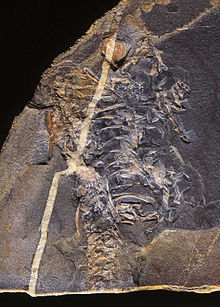
Back تطور الزواحف Arabic فرگشت خزندگان Persian Evolução dos répteis Portuguese Эволюция пресмыкающихся Russian 爬行动物的进化 Chinese

| Part of a series on |
| Evolutionary biology |
|---|
 |
Reptiles arose about 320 million years ago[1] during the Carboniferous period. Reptiles, in the traditional sense of the term, are defined as animals that have scales or scutes, lay land-based hard-shelled eggs, and possess ectothermic metabolisms. So defined, the group is paraphyletic, excluding endothermic animals like birds that are descended from early traditionally-defined reptiles. A definition in accordance with phylogenetic nomenclature, which rejects paraphyletic groups, includes birds while excluding mammals and their synapsid ancestors. So defined, Reptilia is identical to Sauropsida.
Though few reptiles today are apex predators, many examples of apex reptiles have existed in the past. Reptiles have an extremely diverse evolutionary history that has led to biological successes, such as dinosaurs, pterosaurs, plesiosaurs, mosasaurs, and ichthyosaurs.
- ^ "Reptile Evolution". Biology LibreTexts. LibreTexts. 15 August 2021. Retrieved 13 December 2023.